WHAT’S UP WITH THE LEAVES?
No Other Explanation
The leaf-goblin struck again; this time I was sure. Leaf season is pretty much over around here but I was in my car on my way to do some errands and spotted a row of plastic trash bags full of leaves lined up along the other side of the street. I says to m’self, “I’ll be back this way within the hour, so I’ll stop and throw the bags in the back of the truck on my way home.” When I drove by again, the leaf bags were gone! This was not an isolated incident, but never has the leaf-goblin’s handiwork been so quick.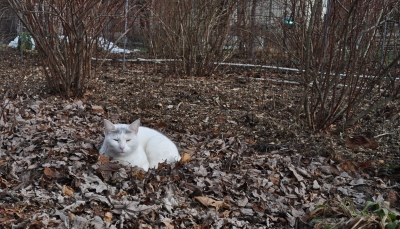
I suppose I’m to blame for this curse. Over the years, I have written about, spoken about, yes, even bragged about all the leaves — that’s other people’s leaves, conveniently in bags — that I have gathered up each autumn for my garden. I have preached to anyone who would listen about the folly of stuffing leaves into plastic garbage bags to be thrown out.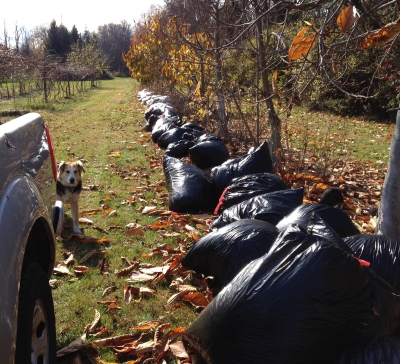
‘Taint Garbage
Garbage? Hrrrumph! Added to the soil, leaves decompose to become a complex mix of organic matter that feeds plants, fluffs up tight soils, and holds water like a sponge in porous soils. (Organic matter is usually defined as any chemical compound that contains carbon-hydrogen or carbon-carbon bonds; put more simply, it’s anything that is or once was living.)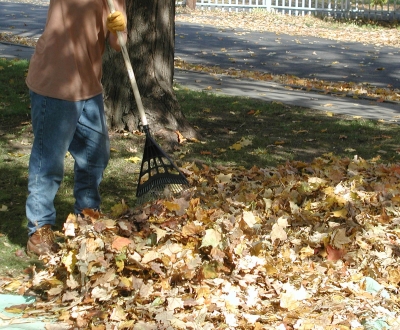
The Great Plains of our Midwest, the steppes of Russia, and the pampas of Argentina are the finest agricultural soils in the world because they are rich in organic matter. We gardeners can similarly make great soils for our gardens by enriching them with organic matter.
But organic matter is flighty stuff, and variable in its flightiness. It’s a mix of many compounds, living and dead, some of which are more long-lasting in the ground than others. According to their food preferences, living soil microorganisms are constantly gobbling up various living and dead organic matter, turning its carbon back into carbon dioxide, and gobbling up raw organic matter to make new organic matter. And that’s where those plastic bags full of leaves lined up along streets enter the picture.
Those leaves are a convenient food for soil organisms. As they feed, mineral nutrients such as nitrogen, phosphorus, and potassium are released into the ground in a form that plants can use. Nutrients tied up in organic compounds are generally not on any plant’s menu.
Do/Don’t Do What I suggest
I realize that if I convince all of you to rake up your leaves in autumn for your own gardens, then I’ll have no leaves to import into my garden. From all the leaf bags I have managed to collect over the years, some people evidently still have no idea what to do with a lawnful of leaves.
Doesn’t everyone realize that leaves are a valuable addition to a compost pile, or that you can make compost — in this case called “leaf mold” — solely of leaves? 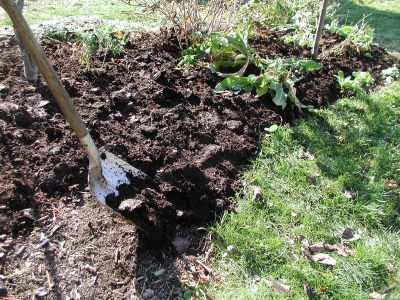 True, a pile of only leaves takes a long time to decompose to form organic matter, but what’s the rush? After a few years, you have a continuous supply of organic matter that is weed-free (except for a few oak or maple seedlings). A surprisingly small wire enclosure can house quite a lot of leaves, especially as they pack down and begin to decompose.
True, a pile of only leaves takes a long time to decompose to form organic matter, but what’s the rush? After a few years, you have a continuous supply of organic matter that is weed-free (except for a few oak or maple seedlings). A surprisingly small wire enclosure can house quite a lot of leaves, especially as they pack down and begin to decompose.
Leaves also are a perfect mulch for the ground beneath shrubs and trees. The bottom layer of leaves I spread beneath my berry bushes last year already has begun decompostion and has been pulled down deeper into the ground by earthworms. This leafy soil blanket keeps the soil warmer in winter and cooler in summer. Raindrops pounding on bare soil an turn it into a slick, impermeable layer. Bare clay soil’s surface cracks when it dries out. Not so, in either case, with soils covered with that leafy raiment.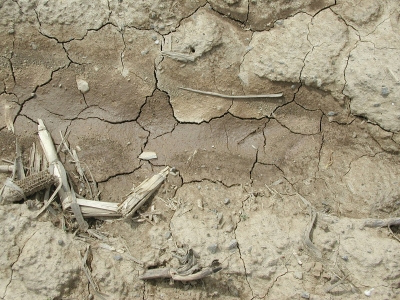
Of course, I should also have realized the other danger in lauding the value of leaves: I might create a leaf-goblin. Or — horror — is there more than one leaf-goblin snatching up leaf bags just as I am about to retrieve them?
One more leaf bag dilemma: Although the leaf-gathering season has pretty much passed here, large orange bags painted like jack-o’-lanterns still occasionally sit temptingly in front of many homes. Are they still for decoration, or can I take them? Those bags just sit there untouched, so I am guessing that the jack-o’-lantern faces have warded off both me and the leaf-goblin(s).
(No need to choose between growing plants for either beauty or for good food. Foodscape! I will be presenting at the next Foodscaper Conference, focussed on the business of foodscaping as a profession, in January 2024. For more information, go to https://www.thefoodscaper.com/conference.)


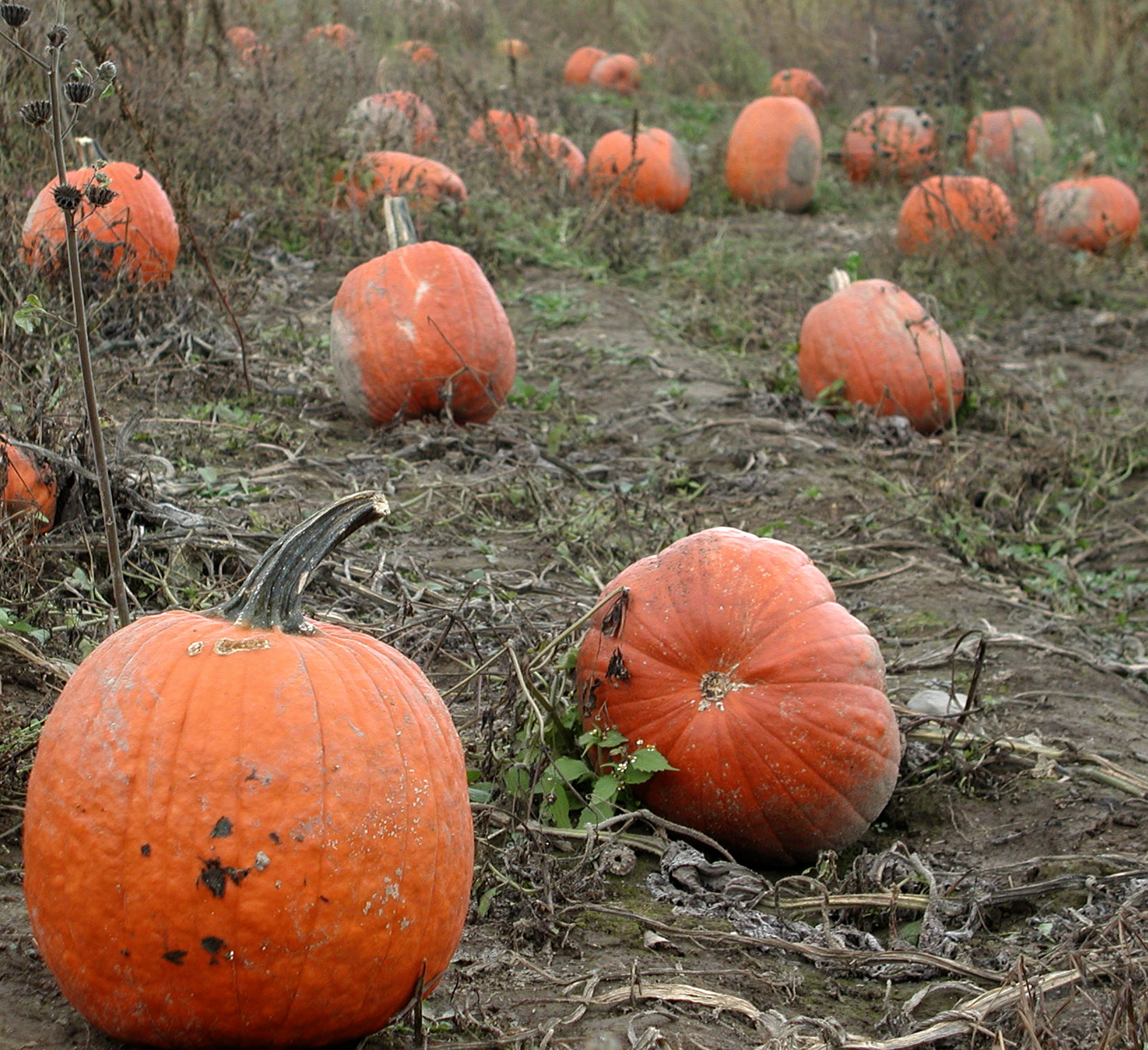
I know the feeling! Where I live, they’ve started using a big machine that suck them up and takes them to the dump! I have to travel 20 minutes to another town where people still put out bags. So far, I have about 12 bags. If I get enough, I’ll use some to line the compost pile to insulate it. I’ve seen that done and my piles need all the help they can to heat up. I’m not strong enough to turn them often.
Good idea.
I did gather a number of leaf bags this year. I used them to insulate some young fruit trees.
I was very hesitant however because I could not know if the leaves contained black walnut leaves.
The bags I have remaining may go around the berry bushes but not the tomato bed.
As I replied to Marianne’s post, I doubt whether the fallen leaves would have deleterious side effects. But do a test. I once had a bunch of black walnut wood shavings. I was hesitant to use it as mulch on my blueberries, but figured they would do no harm. They didn’t.
Great article! I’m all about keeping the biomass on my property too . One question: I have two large butternut trees plus two smaller black walnuts and was wondering if adding the shredded or somewhat decomposed leaves to my garden beds as well as my ornamental garden would have any ill effects? In other words could i be adding juglone to the soil via the leaves ?
Back to raking
I suggest adding the leaves to only a small part of your garden as a test. My guess is that the fallen leaves will not cause any ill effects, especially shredded or somewhat decomposed.
I invested in a leaf sweeper that I attach to the back of my Ryobi electric Ride-on. Not only do I do my 1 acre, but I offer to do all of my immediate neighbors’ lawns. Of course, they are thrilled, and so am I! I bring them home and dump them in a central location where I use my electric leaf blower/chipper to mulch them into a garbage can. From there, I bring them to various beds. I was amazed at how I didn’t have to weed my vegetable garden at all this past year and how moist they kept the soil…of course, it was a very wet year, so I don’t know how much was the rain and how much was the leaves, but either way, I was happy. I put a bunch out back where I have my wine cap mushrooms, and a bunch in a few new permaculture beds that I’ve started.
Nice. The leafy mulch definitely has a significant impact on soil moisture.